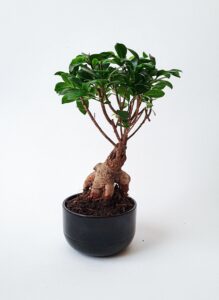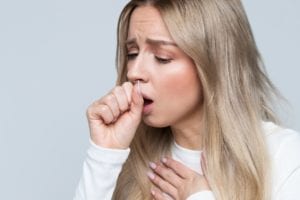Adaptogens For Stress
We hear about stress and the toll it takes on our bodies and minds every day. We’ve almost become bored with the idea. “Yeah, so what?” we think. “Stress is a fact of life…there’s no getting away from it – and there certainly isn’t any cure for it. We just have to live with it.” The sad truth is that we don’t live with stress, we die from it.
So how does one effectively address a problem that is pervasive, lifestyle-based, and for many of us, unavoidable?
ADAPTOGENS: NATURE’S ANSWER TO STRESS
The answer lies in a fascinating story about political ambitions, international intrigue, and one man’s passion.
In the 1940’s, Soviet Russia was a country “at war” with the rest of the world. Though the horror of World War II had ended – for Russia – the Cold War was just as real. On the international scene, Russia was increasingly taking a backseat to the enormous, developing economic power of the United States and Europe, while losing political favor for its communist theories in all but the most liberal of countries. Against this backdrop of political and economic isolation, Russia was determined to prove itself through its “pet” projects – principally the space race and international sports. And for over 40 years Russia confounded the West with its ability to set records for manned space flights, as well as its domination of the world of international sports.
What was going on?
The story moves to a remote outpost in Vladivostock, Russia and the Academy of Natural Sciences, headed by a young man named Dr. Israel Brekhman. Landing the position in Siberia wasn’t the best possible outcome for a brilliant and ambitious young man, and his initial reaction was one of dismay and heartbreak. He found on arrival that his lab facilities were seriously under-equipped and he had few assistants assigned to help with his experiments. But when Dr. Nicolai Lazerev learned that Brekhman, his prize student, had been given this posting, he congratulated him, saying that he been given the greatest natural laboratory on earth. This tiny, forgotten laboratory was right in the heart of thousands of acres of pristine, virgin forests, and Dr. Lazerev urged him to “study the plants and find your answer there. Let nature be your laboratory.”
Dr. Brekhman did just that. His initial experiments were with ginseng, where he brought the scrutiny of western scientific methodology to bear against the ancient claims surrounding the herb. His experiments yielded the first factual evidence that ginseng did indeed possess remarkable properties and enhanced stamina and endurance in athletes. In fact, the title “Father of Ginseng” is still widely used in books dedicated to herbology to describe Dr. Brekhman because of his landmark work with this herb1. But Brekhman, the “Father of Ginseng”, eventually abandoned his study of the herb as he discovered that it was too “heating” and could not be used long-term to support overall health and well-being.

The quest for plants that could support optimal health and expand an organism’s overall adaptive response to stress of all kinds continued. These plants would have to be safe for the general population to take daily. They would need to be supportive and balancing, returning disrupted systems to homeostasis, but not interfere with normal metabolic functions. And they would ideally act by increasing the body’s overall and nonspecific resistance to stress of all kinds2. It was Brekhman’s mentor and professor, Dr. Lazerev, who had coined the term “adaptogen” in 1947, to identify these benefits they were looking for – plant compounds that could expand an organism’s ability to adapt to pressure or change, i.e., stress, without disrupting healthy, normal cellular functions. Dr. Lazerev urged Brekhman to continue his research and measure every plant against these three determinants.
As Brekhman’s research proved fruitful, his laboratory would eventually expand to include more than 1200 of Russia’s top researchers. During the next 40 years, 236 plants and herbs would be studied and more than 3,000 clinical trials would be completed.
ADAPTOGENS: THE MISSING NUTRIENTS
Of the over two hundred plants studied by Dr. Brekhman, fewer than twelve qualified as adaptogens. From the twelve, only a few were found to be of significant value.3
Described as the “King of Adaptogens,” Eleutherococcus senticosus is one of the most important adaptogens known to this day.4 Brekhman first became intrigued by the shrub that grew profusely across the Siberian peninsula when he noticed that the spotted deer sought out the shrub and ate the leaves when their antlers were growing, as well as when they appeared sick. He discovered that the plant had remarkable properties that supported a strong and healthy immune response to challenges, particularly to respiratory infections, but it also was shown to help support physical work capacity, increase mental clarity and focus, suppress an excessive amount of the stress hormone cortisol, regulate the adrenals, and facilitate and regulate the utilization of glucose by the muscles.5,6,7,8 Brekhman had been able to isolate and identify key biologically active compounds in the plant’s leaves and roots called glycosides, or eleutherosides, with eleutherosides B and E being most valuable.9 Later studies have confirmed the importance of these eleutherosides, but only when found in whole ethanolic extracts.10
In one of the most comprehensive reviews of Eleutherococcus senticosus available, the late Professor Norman Farnsworth of the University of Illinois at Chicago, stated, “There are numerous reports of the ability of ES extracts to inhibit or modulate a disease process….The return to normal of …patients following ES treatment is an example of the ability of this extract to normalize pathological conditions regardless of the direction of change.”11
In his study, concluded in 1983, Professor Farnsworth confirmed that Eleutherococcus senticosus helped glucose cross the cell barriers (membranes) to be more easily absorbed. As a result, the sugar levels in the blood returned to normal more quickly. The results of this more efficient cellular activity is that after taking ES, there is more energy available to carry out difficult tasks. The body can perform better with less fatigue. It has been confirmed at research centers throughout the world that when a subject is taking adaptogens such as Eleutherococcus senticosus the body has a better supply of fuel and a lower buildup of wastes (lactic acid) that lead to exhaustion and poor functioning.12
Another extremely beneficial adaptogen is Rhaponticum carthamoides. Used to maintain muscle mass through its unique ability to supply oxygen more easily to tired muscles and to enrich the oxygen-carrying capacity of red blood cells, it also stimulates the metabolism and supports the biosynthesis of muscle tissue.13 In its unique ability to increase the development of healthy muscle and tissue, it has been shown to aid in the healing of ulcers.14,15
Also used to help support gastric health is the adaptogen, Schizandra chinensis.16 Shown in clinical studies to support the health of the stomach, it is believe to help suppress excessive stomach acid. Valuable for its ability to improve recovery from fatigue and exhaustive physical work and to increase the quantitative and qualitative ability for performing physical work, it also increases endurance, sharpens the senses, and raises the general tonus in the organism.17

In a published study done in 1989 entitled “Studies of the Effect of Schizandra chinensis Extract on Horses Submitted to Exercise and Maximum Effort,” Schizandra chinensis was shown to “augment the utilization of oxygen, and improve the gaseous exchange in the lungs and cells. This, in turn, would result in a better recovery of the respiratory frequency after an intense physical effort.”18
Schizandra chinensis has long been prized by the Chinese for its hepato-protective, or liver protective, properties. In TCM (Traditional Chinese Medicne) Schizandra was known as a tonic for anti-aging, improved skin, and sexual function. This may be due to its benefitical action on liver function.19
Rhodiola rosea, or golden root, contains seventeen amino acids, plus many vitamins and trace elements. Important active compounds include rosavins and salidrosides. The root generally strengthens the nervous system and digestive system, and reduces exhaustion through its tonic effect.20 It has also been shown to increase the utilization of lipids (fats) as an energy source, currently of great interest in athletes of all types, especially endurance.21
Aralia mandschurica is another adaptogen that can provide important supportive nutrition for a healthy digestive tract.22,23,24 It also improves stamina during physical exercise, as well as increasing the oxidation-reduction process of the tissues. This leads to better recovery after physical exercise.25
From Brehkman’s beginnings in the 1940’s to now, more plants have been added that show significant value as adaptogens. With the increasing interest in these remarkable plants and the wholly beneficial effects they have on health and wellness, we expect continued research will expand in this field of study.
ADAPTOGENS: HOW THEY WORK
Simply put, physical, mental, or emotional stress deprives cells of their energy supply which, in turn, inhibits work capacity, and the feeling of well-being. Adaptogens work at the cellular level to substantially reduce this stress-induced energy deprivation.
More specifically, adaptogenic substances – plant sugars or glycosides – increase the capacity of cells to build “energy factories” by activating certain “workers,” including mRNA (messengers) and tRNA (transporters). They also help prevent the formation and accumulation of complex molecules called beta-lipoproteins.26
When an organism is under any type of stress, complex molecules called beta-lipoproteins build up and inhibit the passage of energy through cell walls. The key enzymes (hexokinase) which transform glucose to be used by the cells as energy are blocked by these stress-induced beta-lipo-proteins. As a result of this physiological response to stress, cells do not receive enough energy and their ability to perform many of their critical functions is greatly hindered.27

However, the effect of stress can be minimized or even neutralized if the organism has built up sufficient stress-fighting capacity. The glycosides found within adaptogenic plants work in concert with the body to prevent formation and accumulation of harmful beta-lipoproteins caused by stress, thereby allowing the hexokinase enzymes to more readily convert glucose into usable energy for the cells. According to the Michael Wahlstrom in his book, Adaptogens: Nature’s Key to Well-Being, they also act as anti-oxidants and thwart the free radicals which adversely affect cell membranes. In addition, adaptogens have been shown to help an organism tolerate stressful stimuli (including hard athletic training, extremes in temperature and altitude changes, exposure to toxins and disease) by normalizing the organism’s metabolism and stimulating the immune system.28,29
STRESS: IT COSTS MORE THAN YOU REALIZE
Stress manifests itself in an organism in three clearly defined phases:
- The alarm phase
- The resistance phase
- The exhaustion phase
The healthy organism is ideally evolved to move between the first two stages and back to homeostasis.30 But when a stress remains unresolved, the organism stays too long in the resistance phase and eventually slides into exhaustion. Unfortunately for many of us, we live primarily moving between the last two phases, resistance and exhaustion, never fully recovering from one stress before being challenged by another.
Adaptogens may be invaluable in the face of such constant stress. Working at the cellular level, much like cellular chaperones, acting only when needed to stabilize and even restore normal cellular function, their action tends to increase the body’s capacity to withstand stress of any kind. This is significant as stress is implicated as a major factor in many of the most serious health issues which affect us all in modern life.
Stress is also proven to be a powerful suppressor of the immune system, leaving us at risk for any number of viral and bacterial infections. Even with a thorough immunization program, you are only vaccinated against the specific strain of virus or bacteria in the particular vaccine. A strong immune system is always your best defense.

Antibiotics are another possible risk for us. Many of the newest class of broad-spectrum drugs now used, while life-saving in their ability to fight increasingly resistant strains of bacteria, tend to be rather indiscriminate, taking out the good bacteria with the bad. The result, then, of a week’s worth of antibiotics can be a depletion of the important gut flora. This can lead to serious, even chronic digestive issues.
ALL STRESSED OUT AND NOWHERE TO GO
How many of us have seen personal and competitive goals disappear because we fell ill, burned out, or were simply too overtaxed to stay on target with those goals? To have the ability to supplement our health beyond the current nutritional technology of vitamins and minerals allows us an important measure of safety.
Hans Selye, M.D., the brilliant endocrinologist who first defined and demonstrated stress as a scientific model, wrote in his highly respected book, The Stress of Life, “In its medical sense, stress is essentially the rate of wear and tear in the body.”31 This wear and tear is something that we all realize we experience on a daily basis, and it affects us mentally, emotionally, and physically. The use of adaptogens should be considered as an essential part of maintaining our health and well-being.
Vitamins, minerals, proteins, carbohydrates…and now adaptogens, nature’s miracle sugars. These unique bio-active plant compounds, with their remarkable ability to expand our adaptive response to the stress that is killing us may require that we expand our idea of nutritional requirements. One man’s lifelong search in the forests of Siberia has yielded the antidote for modern living…adaptogens – nature’s answer to stress.
1. Fulder, S., The Book of Ginseng, Healing Arts Press 1993.
2. Walker, Morton, D.P.M., “Adaptogens: Nature’s Answer to Stress,” The Townsend Letter for Doctors, July 1994.
3. Walker, Morton, D.P.M., “Adaptogens: Nature’s Answer to Stress,” The Townsend Letter for Doctors, July 1994.
4. Kaplan, E. Ya., Sokolov, A.S., et.al., “Study of the Range of the Adaptogenic Action of Eleutherococcus senticosus Rupr. Et Maxim, Part One” Chemical Pharmaceutical Institute of Leningrad.
5. Bohn, B., etl.al., “Flow-Cytometric Studies with Eleutherococcus senticosus Extract as an Immunomodulatory Agent,” Arzeneimittel – Forschung Drug Research, 37 (10): 1193-1196, 1987.
6. Walker, Morton, D.P.M., “Adaptogens: Nature’s Answer to Stress,” The Townsend Letter for Doctors, July 1994.
7. Farnsworth, Norman, “Economic and Medicinal Plant Research, vol. 1.” Academic Press, 1985.
8. Jin L, Schmiech M, El Gaafary M, Zhang X, Syrovets T, Simmet T. A comparative study on root and bark extracts of Eleutherococcus senticosus and their effects on human macrophages. Phytomedicine. 2020 Mar;68:153181. doi: 10.1016/j.phymed.2020.153181. Epub 2020 Feb 6. PMID: 32065954.
9. Barenboim, G.M., “Eleutherococcus: Application and the Mechanism of Action, Part Five.”
10. Steinmann GG, Esperester A, Joller P. Immunopharmacological in vitro effects of Eleutherococcus senticosus extracts. Arzneimittelforschung. 2001 Jan;51(1):76-83. doi: 10.1055/s-0031-1300006. PMID: 11215331.
11. Farnsworth, Norman, “Economic and Medicinal Plant Research, vol. 1.” Academic Press, 1985.
12. Tabachnik, B., “Adaptogens – Stronger Than Stress,” PrimeQuest International, 1994.
13 Syrov, V.A., Kurmukov, A.G., “On the Anabolic Activity of Phytoecdysone-Ecdysterone Extracted from Rhaponticum carthamoides.” Journal “Farmakologiya and Toksikologiya” (Moscow) (Pharmacology and Toxicology), 39 (6), 1976, 690-693, Lab. Pharmacol.,. Inst. Bot. Chem., Acad. Scien. Uzb. USSR, Tashkent, USSR.
14. Scosireva, O.V., “The Change of Content of Some Hormones (Chondrotropic Hormone, Gastrin, Cortosol, Insulin) as a Result of a Combined Treatment with Ecdisten of an Ulcerative Disease of Duodenum.” Proceedings of the 4th All-Union Congress of the Gastroenterologists, October 17-20, 1990.
15. Syrov, V.N., Kushbakrova, Z.A., Mirzaev, Yu. U., Baltaev, U.A., “Anti-ulcerous Action of Ecdisterone.” Chemical Pharmaceutical Journal, issue 4, 1989. Moscow: Medicina, 441-445.
16. Panossian A, Wikman G. Pharmacology of Schisandra chinensis Bail.: an overview of Russian research and uses in medicine. J Ethnopharmacol. 2008 Jul 23;118(2):183-212. doi: 10.1016/j.jep.2008.04.020. Epub 2008 Apr 24. PMID: 18515024.
17. Lupandin, A.V., Lapaev. I.I., Schizandra. Khabarovsh Book Publisher, 1981, page 125.
18. Ahumada, F., Hermosilla, J., Hancke, J., et.al., “Studies of the Effect of Schizandra chinensis Extract on Horses Submitted To Exercise and maximum Effort,” Phytotherapy Research, vol 2., no. 5, 1989.
19. Teeguarden, R., Chinese Tonic Herbs, Japan Publications, 1984.
20. Panossian A, Wikman G, Sarris J. Rosenroot (Rhodiola rosea): traditional use, chemical composition, pharmacology and clinical efficacy. Phytomedicine. 2010 Jun;17(7):481-93. doi: 10.1016/j.phymed.2010.02.002. Epub 2010 Apr 7. PMID: 20378318.
21. Sartikov, A.S., Golden Root (Rhosiola rosea). Tomsk, 1974, p. 155.
22. Lee EB, Kim OJ, Kang SS, Jeong C. Araloside A, an antiulcer constituent from the root bark of Aralia elata. Biol Pharm Bull. 2005 Mar;28(3):523-6. doi: 10.1248/bpb.28.523. PMID: 15744082.
23. Hernandez DE, Hancke JL, Wikman G. Evaluation of the anti-ulcer and antisecretory activity of extracts of Aralia elata root and Schizandra chinensis fruit in the rat. J Ethnopharmacol. 1988 May-Jun;23(1):109-14. doi: 10.1016/0378-8741(88)90120-1. PMID: 3419197.
24. He H, Li X, Yu H, Zhu S, He Y, Komatsu K, Guo D, Li X, Wang J, Luo H, Xu D, Zou K. Gastroprotective effect of araloside A on ethanol- and aspirin-induced gastric ulcer in mice: involvement of H+/K+-ATPase and mitochondrial-mediated signaling pathway. J Nat Med. 2019 Mar;73(2):339-352. doi: 10.1007/s11418-018-1256-0. Epub 2018 Dec 6. PMID: 30523551.
25. Walker, Morton, D.P.M., “Adaptogens: Nature’s Answer to Stress,” The Townsend Letter for Doctors, July 1994.
26. Teeguarden, R., Chinese Tonic Herbs, Japan Publications, 1984.
27. Wahlstrom, Michael, Adaptogens: Nature’s Key to Well-Being. Goteborg: Skandinavisk Bok, 1987.
28. Wahlstrom, Michael, Adaptogens: Nature’s Key to Well-Being. Goteborg: Skandinavisk Bok, 1987.
29. Wagner, H., Norr, H., and Winterhoff, H., “Drugs with Adaptogenic Effects for Strengthening the Powers of Resistance,” Zetschrift fur Phytotherapie. 13:42-54, 1992 (English translation by Shanti Cole and Christopher Hobbs).
30. Selye, H. (1956). The Stress of Life. McGraw-Hill.
31. Selye, H. (1956). The Stress of Life. McGraw-Hill.


